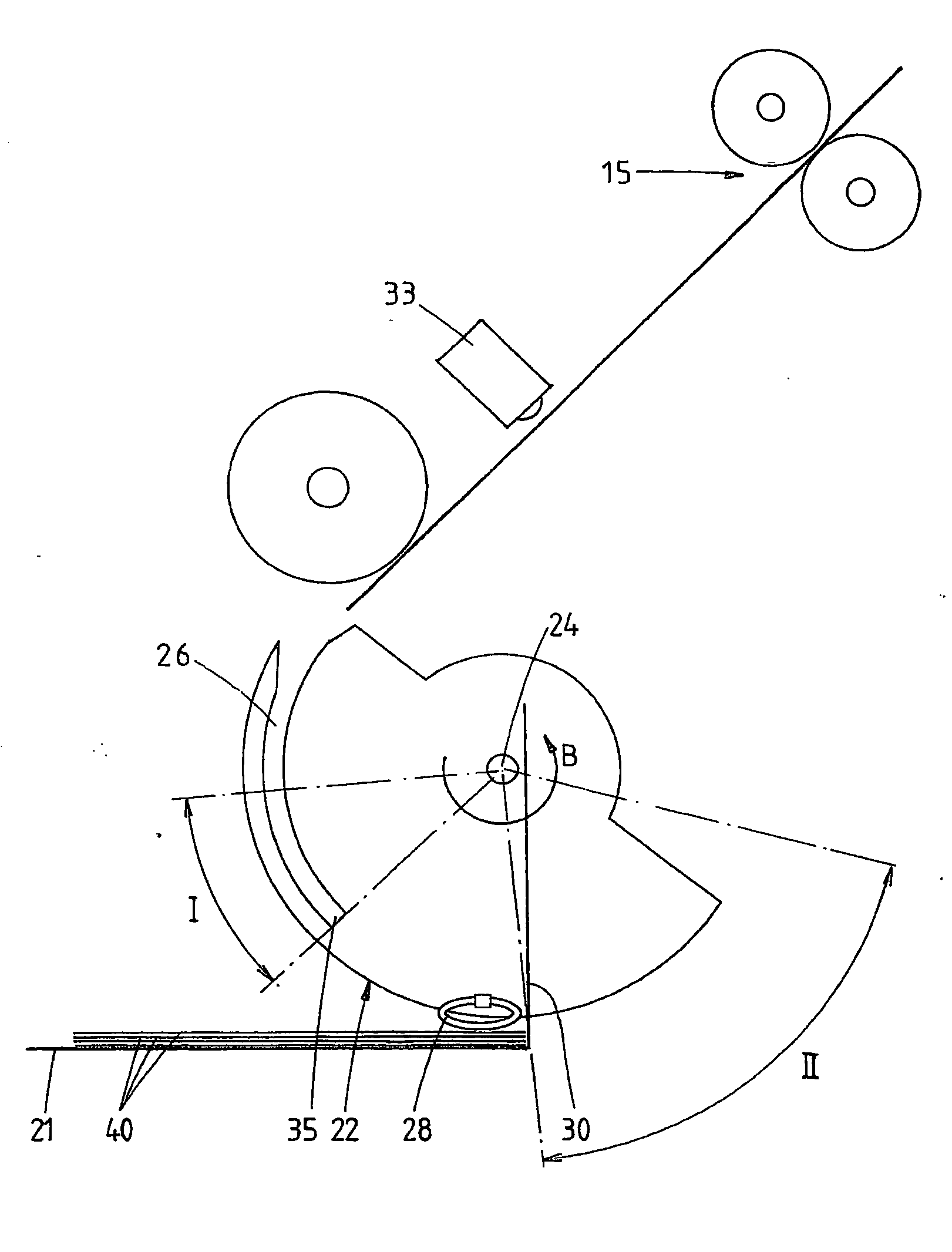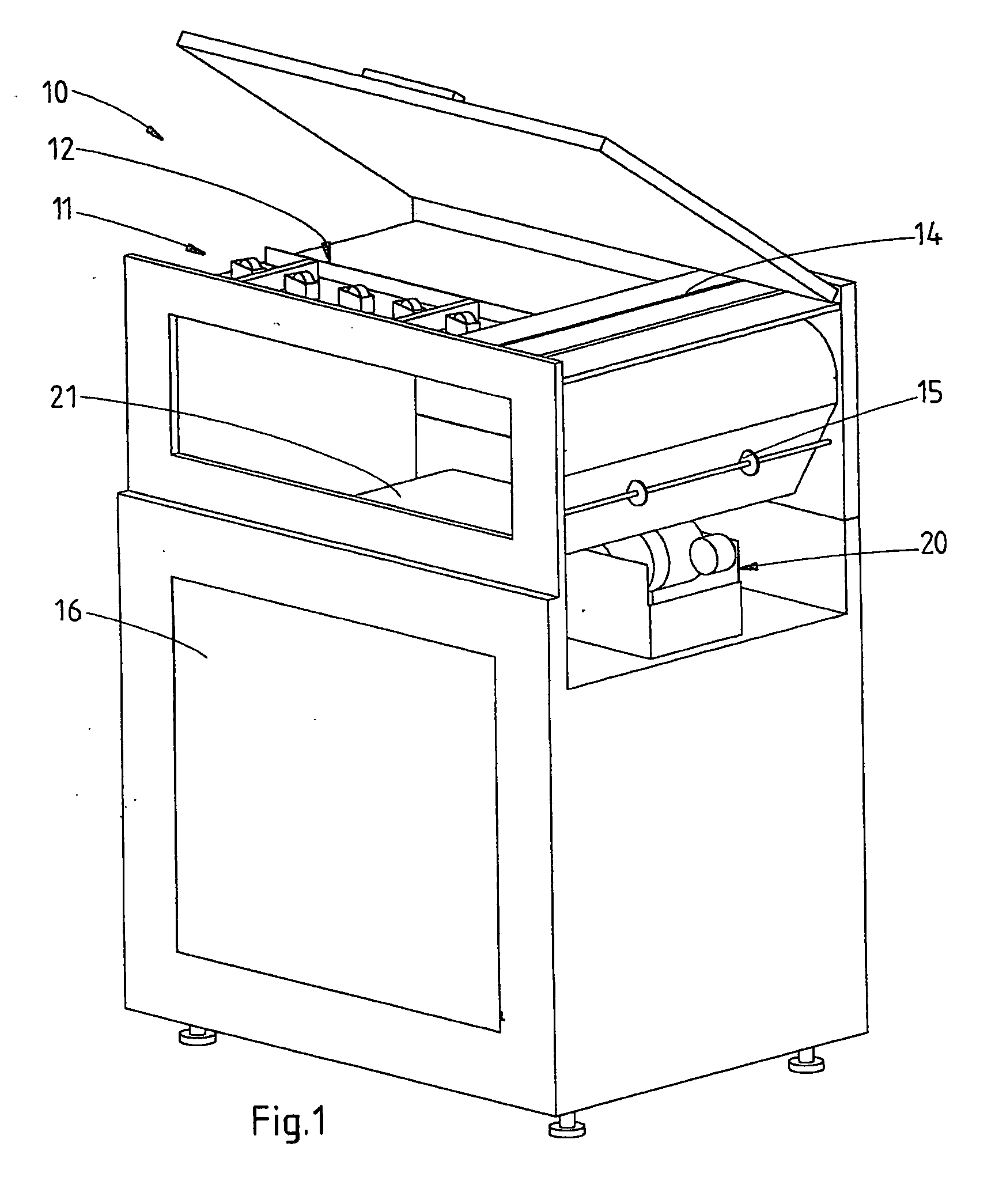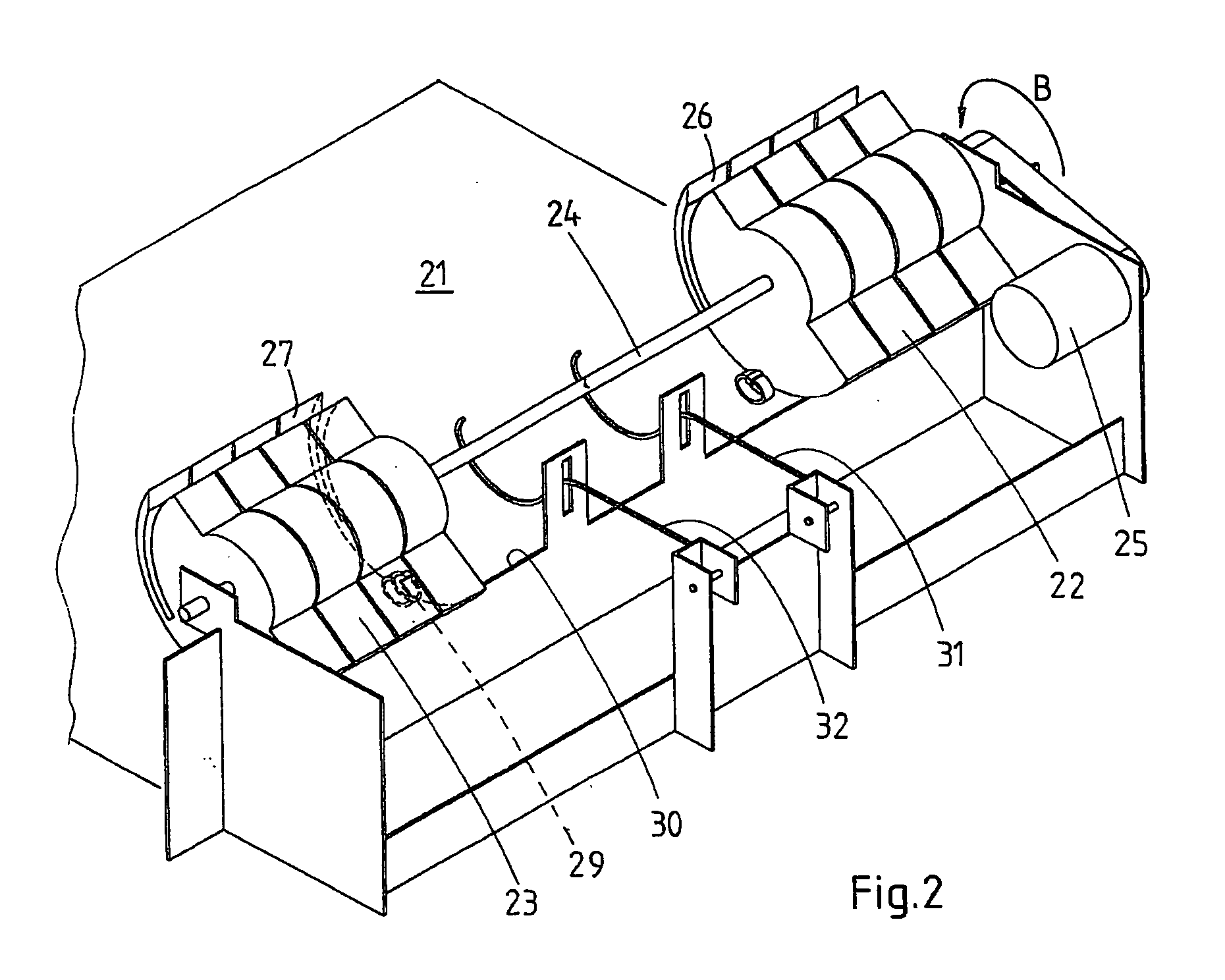Sheet stacking device
a stacking device and stacking technology, applied in the direction of printing presses, rotary presses, printing presses, etc., can solve the problems of high undesirable deviations in the orientation of sheets relative to one another and relative to the reference plane, insufficient precision in producing accurately formed stacks, and inability to accurately form stacks by known devices. , to achieve the effect of reducing the smearing of any printing pattern produced, improving directional guidance, and reducing slide resistan
- Summary
- Abstract
- Description
- Claims
- Application Information
AI Technical Summary
Benefits of technology
Problems solved by technology
Method used
Image
Examples
Embodiment Construction
[0030]FIG. 1 is a diagram showing a stacking apparatus 10 in which a device according to the present invention has been mounted. A stacking apparatus 10 of this kind may, for example, be mounted behind a printer. By coupling a printer's sheet outlet to the entry point of the stacking device, sheets from the printer may stacked neatly when the registration actions are performed by the stacking apparatus. A stacking apparatus 10 of this kind may be embodied with various output facilities, such as, but not limited to, a pallet output facility for easily feeding stacks from the stacking device onto a pallet, and a binding facility for binding the stacks together, for example using a plastic strip or another method, in order to maintain the shape of the stack during transport.
[0031] The stacking unit 10, as shown in FIG. 1, receives sheets via sheet inlet 11. A sheet which has been fed in is then conveyed against a registration wall 13 by means of a registration ruler 12. A top view of ...
PUM
 Login to View More
Login to View More Abstract
Description
Claims
Application Information
 Login to View More
Login to View More - R&D
- Intellectual Property
- Life Sciences
- Materials
- Tech Scout
- Unparalleled Data Quality
- Higher Quality Content
- 60% Fewer Hallucinations
Browse by: Latest US Patents, China's latest patents, Technical Efficacy Thesaurus, Application Domain, Technology Topic, Popular Technical Reports.
© 2025 PatSnap. All rights reserved.Legal|Privacy policy|Modern Slavery Act Transparency Statement|Sitemap|About US| Contact US: help@patsnap.com



